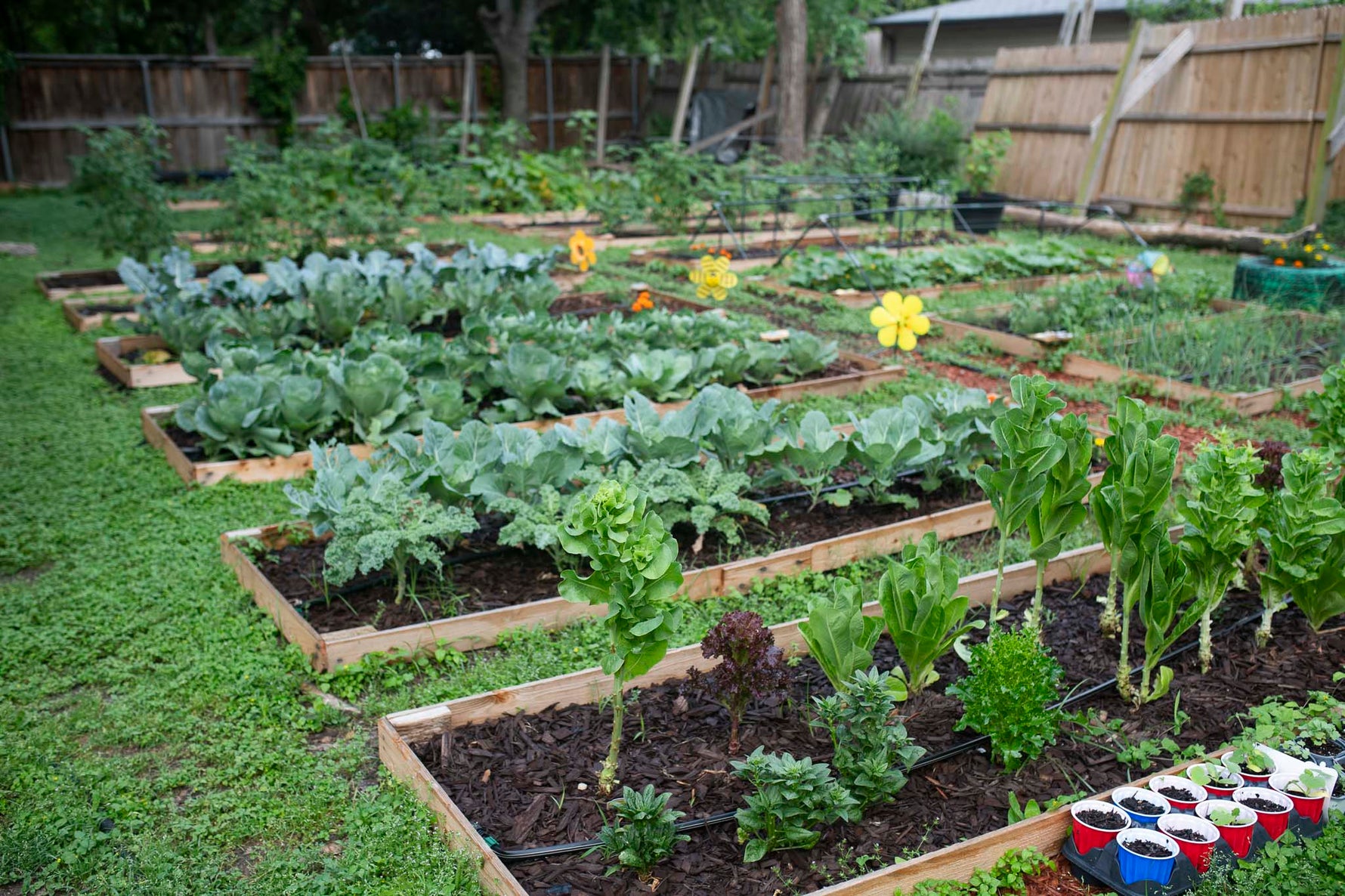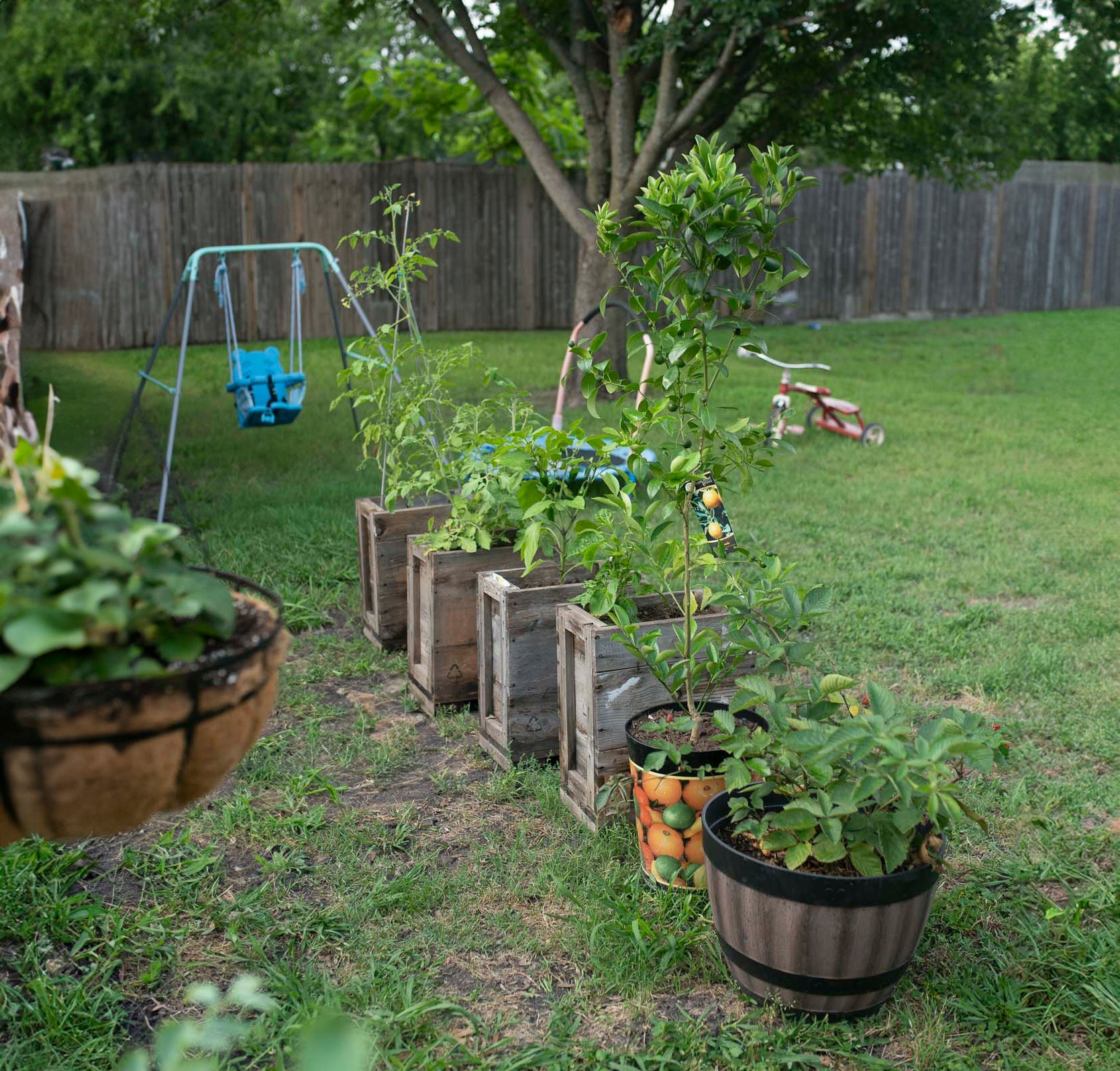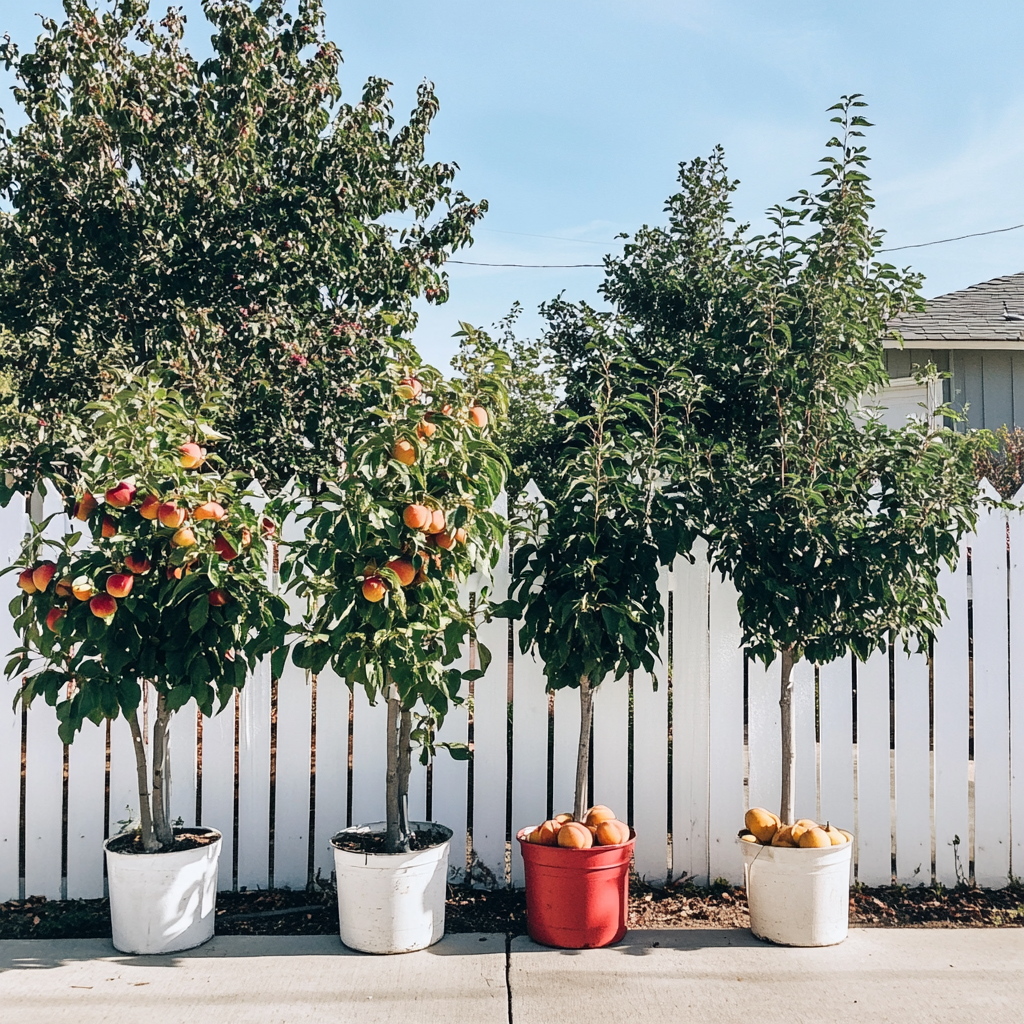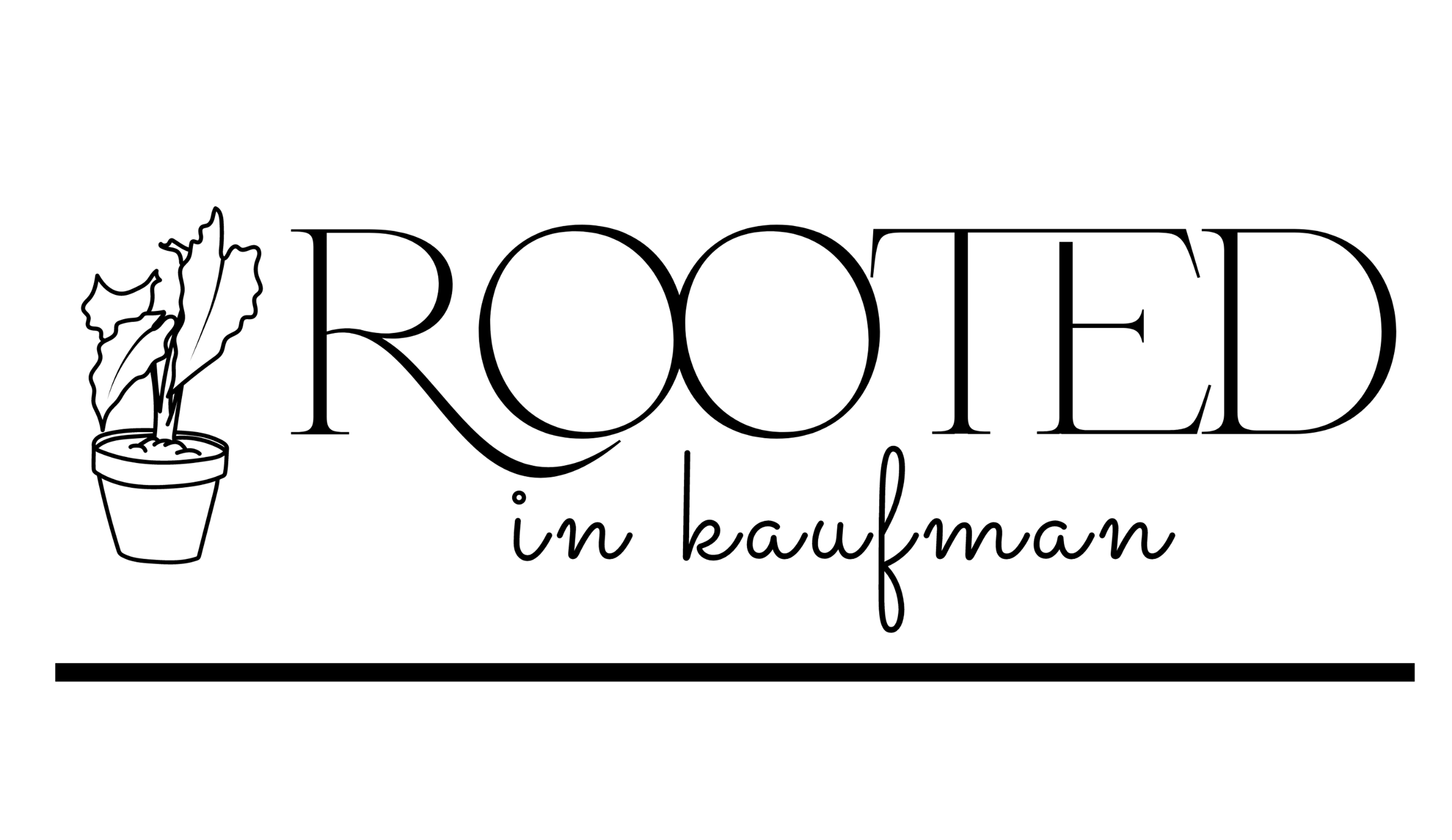News

News
Growing Independence: Matt Jaremko’s Backyard Mini Farm
by Emily Bussey on May 20, 2025
Growing Independence: Matt Jaremko’s Backyard Mini Farm
By Rooted in Kaufman
Step into Matt Jaremko’s backyard and you’re instantly transported to something between a homestead and a living classroom. Tucked into a quiet corner near Kaufman County, Matt has transformed his one-third-acre lot into a thriving, food-producing backyard farm—complete with vegetables, herbs, blackberries, and yes, even chickens.
This isn’t just gardening—it’s a full-on mission for self-sufficiency.
🥬 From Lettuce to Livestock: A Backyard Tour
Matt’s garden is carefully laid out in zones, with crops growing directly in the ground, in raised beds, grow bags, and even repurposed containers. It’s organized, productive, and deeply intentional.
“We’ve got lettuce, spinach, kale, collard greens, broccoli, cauliflower, bell peppers, tomatoes, hot peppers, squash, zucchini, cucumbers… the list goes on,” Matt says. “And the sweet potatoes? Those might be the easiest thing out here.”
His tomato beds are especially impressive, featuring both classic and cherry varieties for quicker harvests. Bell peppers and hot peppers are growing side by side, while squash and corn mingle in what he proudly calls his “Three Sisters” bed—a time-tested companion planting method used by Indigenous farmers where squash, beans, and corn grow together and help one another thrive.
🍓 Soil, Seeds, and Smart Strategy
Matt doesn’t just dump soil into boxes. “I’ve worked the actual soil underneath the beds,” he says. “Manure, compost, additives—every plant wants something different.” He’s done his homework, tailoring the soil composition to match each plant’s nutritional needs.
He starts many crops from seed—beans, onions, corn—while others come from starter plants. “I’ve got a mix,” he explains. “The goal is always to keep things growing and rotate with the seasons.”
He’s even growing blackberries from a plant he put in the ground five years ago. “It went crazy,” he laughs. “We had to take down the old fence because the vines took it over.”
🌞 Water, Bugs & Texas Heat: Real-Life Garden Lessons
Texas gardeners know water is everything, and Matt’s no exception. He installed a drip irrigation system and supplements it with hand watering. “The system helps, but I still like to water by hand so I know it’s getting where it needs to,” he says. “And in the summer, I’ll put up a 20-by-26 foot shade cloth to protect the more tender crops.”
For pest control? It’s essential oils. “I use rosemary oil, mint oil—natural stuff that works.”
And yes, there are marigolds and rosemary planted throughout the garden to deter pests, especially around his tomatoes.
🐔 Beyond Veggies: Chickens & Big Plans
The backyard also hosts chickens—just another step in Matt’s journey toward sustainable living. “Eventually I want a greenhouse. Maybe even a small farm,” he says with a grin.
The greenhouse is already in the works: a 20-by-15-foot structure where he’ll start seedlings in the early spring. “I started a bunch indoors this year, but I need more room. The greenhouse will be a game changer.”
🥗 Taste the Difference
When asked what tastes the best fresh from the garden, Matt doesn’t hesitate: “The lettuce. Hands down. It’s not bitter like the store stuff. And the herbs—we’ve already cut enough cilantro to make back what we spent.”
His wife takes fresh lettuce to work weekly, and with multiple harvests already behind them, the garden’s paying off in more ways than one.
🌱 Garden Wisdom from a Backyard Farmer
So what’s Matt’s advice for someone starting their own backyard farm?
“Water. That’s the biggest thing. In Texas, if you can’t keep it watered, it won’t grow.”
His second tip? Don’t be afraid to experiment. Raised beds, grow bags, direct planting—it’s all on display in his backyard, and each method has its place.
Most of all, Matt says it’s about learning as you go, and not getting discouraged. “Some stuff works, some doesn’t. You figure it out.”
From romaine to rosemary, Matt’s backyard is proof that with a little land, a lot of effort, and a bit of research, anyone can grow a slice of independence. And in a world of rising grocery bills and disappearing connection to our food—his message couldn’t come at a better time.

News
Backyard Abundance: A Family Garden Full of Heart
by Emily Bussey on May 20, 2025
Backyard Abundance: A Family Garden Full of Heart
By Rooted in Kaufman
If you ever find yourself daydreaming about a peaceful, productive backyard that brings generations together, Chris and Chelsea Jaremko’s garden is what that dream looks like. Nestled in their backyard, this edible oasis is more than just a patch of plants—it’s a place where strawberries are treasures, peach trees are milestones, and the grandkids always know where to find something sweet.
🌱 Growing Runs in the Family
Chris traces his gardening roots back to childhood, when his dad would till up a backyard plot for peppers, tomatoes, green beans, and okra. “It’s like it’s embedded in my DNA,” he says. That early exposure laid the foundation for what he and Chelsea are now cultivating—literally and figuratively—with their own family.
Chelsea’s first brush with gardening started when they bought their home and brought in a trailing vine plant that quickly took over the patio. “It was stressful,” she laughs, “but now it’s like, we can’t imagine not having plants.”
🍓 Why Peach Trees and Strawberries?
The couple’s current favorites? Strawberries and a peach tree. The strawberries have been a journey—early plants didn’t thrive, but with improved soil, better fertilizer, and a lot of trial and error, they’re now harvesting the best crop yet.
Chelsea picked out the peach tree for its beauty and resilience. “Peach trees can handle our winters,” Chris adds. “We love the idea of having homegrown fruit that sticks around year after year.”
🧒 A Garden Built for Grandkids
While the garden started with the couple’s own passions, it has naturally evolved into a haven for their grandkids. “We definitely had them in mind,” says Chelsea. Strawberries are a favorite snack, and the kids love discovering new things—sometimes a bit too early. “Our grandson called a tomato an apple,” Chris laughs. “And they love picking lemons even if they’re not quite ready.”
Their oldest grandchild has even helped plant and water the blueberries, and there's talk of a native wildflower section just for pollinators. “We’re planning a part of the yard we don’t mow for a while—just let the wildflowers take over,” Chris explains.
🌸 Lessons in Soil, Patience, and Surprise Dill
They’ve had their fair share of wins and setbacks. Dill, surprisingly, has thrived. “That thing went crazy,” Chris says. “I found fish fertilizer at Walmart and it changed the game.”
Strawberries, on the other hand, remain their trickiest plant. They’ve gotten better each year, but they’re still chasing that dream crop.
The couple has learned to research each plant’s soil needs and stay away from generic mixes. “Everything is unique,” says Chelsea. “You’ve gotta give each plant what it wants.”
🌼 What’s Next? Native Plants and Pollinators
Looking forward, Chris and Chelsea are excited to integrate more native wildflowers, both for the bees and for the Blackland Prairie ecosystem their yard sits on. “We want to use what naturally thrives here,” Chris says. “And if we can build soil with our own earthworms and compost, even better.”
They hope to eventually turn part of the yard into a native pollinator garden and line their back fence with flowers. “I want it to be full of blooms,” Chelsea says.
🪨 A Garden with a Sparkle
It’s not just plants that grow in Chelsea’s garden—her love of rocks and crystals brings another layer of beauty and personality to the space. A dedicated rockhound, she’s built a small rock garden using treasures collected from her travels, including crystals from Arkansas and Oklahoma and even geodes she found herself in the Oklahoma hills. The sparkling stones are nestled into flower beds and corners of the yard, catching the light and adding a touch of magic among the greenery. It’s a reflection of Chelsea’s curiosity and connection to the earth—and yet another reason their backyard feels so personal and one-of-a-kind.
💡 Advice for Families Starting Their Garden
When asked what advice they’d give someone wanting to build a small, kid-friendly garden, their answer is simple:Start with fruits and flowers.“Choose plants you can eat and see grow. There’s nothing like that feeling when something starts thriving.”
Chris adds, “When you’ve been struggling with a plant and it finally starts to take off—that’s the best feeling in the world.”

News
A Beginner’s Guide to Fruit Trees in North Texas
by Emily Bussey on Apr 21, 2025
🍑 A Beginner’s Guide to Fruit Trees in North Texas
By Rooted in Kaufman
If you’ve been thinking about planting a fruit tree (or a few!) in your yard, now’s the perfect time to get growing. At Rooted in Kaufman, we carry a wide variety of fruit trees that are well-suited to North Texas—and many of them are already mature and ready to thrive in your garden.
Whether you're looking to grow peaches, pears, figs, or even almonds, this guide will walk you through our most popular options, what to expect as they grow, and how to keep them healthy and productive.
🌳 What Types of Fruit Trees Do We Carry?
We’ve got a little bit of everything! Some of our current selection includes:
Peaches
Apricots
Pomegranates
Nectarines
Plums
Pears
Persimmons
Figs
Apples
Loquats
Guavas
Cherries
Pecans & Almonds
Many of our almond trees are already producing little fruits, and they’ve bloomed beautifully this spring!
🍑 Our Most Popular Picks Right Now
Our customers are especially loving:
Peaches – Always a fan favorite for their sweet fruit and low-maintenance needs.
Figs – These are flying off the shelves thanks to their unique look and hardy nature.
Apples, Apricots, and Nectarines – Classic options that do great in Texas soil.
🌞 Best Fruit Trees for North Texas
Looking for something that’ll do well in your North Texas yard long-term? These varieties are tried-and-true favorites:
Peaches
Pears
Figs
We hear from customers all the time who have had the same fruit tree in their yard for 20+ years—and they’re still producing!
⏳ How Long Until You See Fruit?
Most fruit trees take 3 to 5 years to start producing, which is why we sell ours in 5-gallon pots—they’re already in that mature, fruit-ready window. You may even see fruit starting to grow when you visit the nursery!
💡 Pro tip: If you plant a tree this year, remove the first round of fruit. This helps the tree focus on root growth, setting it up for long-term success and bigger harvests later.
🌱 How to Care for Your Fruit Trees
Sunlight:All fruit trees need full sun, ideally 8+ hours per day.
Watering:
While in pots: Daily watering
Just planted in-ground: Every other day, depending on size
During peak summer: Likely daily or even twice a day
As they get established: You can taper off watering, especially outside of summer
Maintenance:Most fruit trees are low-maintenance once established, but don’t skip annual pruning!Plan to prune in late winter (around February) to keep your tree shaped well and ensure good airflow.
🌸 Staff Favorite: Patio Peaches
One of our favorite finds right now? Dwarf Patio Peaches.
Only grow about 6 ft tall and 5 ft wide
Gorgeous weeping canopy
Covered in stunning blooms in spring
Produces full-sized peaches on a compact tree—perfect for small yards or container gardens
🛒 Ready to Grow Your Own?
Come visit us at Rooted in Kaufman to browse our full selection of fruit trees. Our team is happy to help you find the perfect match for your space—and we’ll make sure you leave with tips for long-term success.
